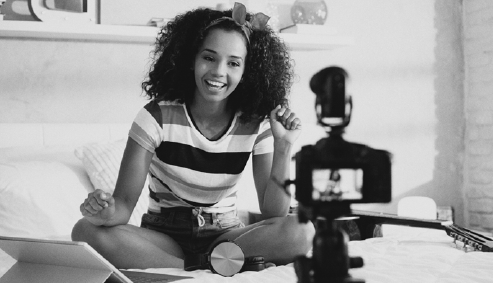Influential marketing has grown with great force over the last few years, evolving itself into one of the hottest trends in marketing. It's even become a proven marketing channel, used by many brands as a way of delivering results in social and PR campaigns.
If you were quick to jump on the blogosphere/vlogosphere bandwagon when it started to boom, you may've found the 'right' influencer with a strong, dedicated following which would make targeting campaigns to the right consumers much easier. However, how influential a person is remains something that's difficult to measure. And as many brands are now evaluating the return on investment (ROI) of influencer marketing, its' worth considering how to approach influencer marketing in 2018.
What are the potential concerns?
Their following is high, but engagement rate is low
In 2018, the 'influencer industry' continues to constantly grow and become more saturated, and bloggers and vloggers alike are finding new and creative ways to grow their following - and while it may appear to be growing across social channels, this doesn't reflect in engagement rate.
This is more obvious on platforms like Instagram which, following an algorithm update, saw peoples' feeds change from chronological order to one that's intended to be more valuable for users based on a variety of factors.
With this in mind, it's now more crucial than ever to conduct a few checks when working with influencers, such as reviewing a few posts on Instagram or even asking for Twitter analytics (which they can easily source on their profile, if you don't check yourself), to make sure engagement and reach correlate well with your brand's following.
Don't measure domain authority alone
Domain authority (DA) is no longer the only metric that needs to be considered for blogs. Along with engagement rate, and potential unique users to a site, brands and PRs should also take trust flow, a metric that can be found on Majestic, into consideration. Many Instagram users have spoken about the algorithm changes and how it has impacted them; but if you're a brand or PR, this can help highlight the ghost followers from the loyal ones.
Potential 'skeletons' in the closet
Just like the rest of us, influencers have said things that they regret. The issue is they've said it on the internet - where it will stay forever, even after deleting - for the world to see. Recently, "fat-shaming" and homophobic tweets from Zoella, and anti-Muslim tweets from Girl With No Job have resurfaced, painting them both in a negative light. As such, always ask influencers to run through their content calendar to make sure everything aligns with your brand to avoid a potential backlash.
Going forward
Overall, there's no right answer to whether influencer marketing should still be a top priority, because it really does depend on the type of campaign you're running and who you're targeting. To understand what approach to take and what's best for your brand, take the time to work out what your objective is before jumping in so you can pick the right partner that'll work to deliver the results you're looking for.
Metrics should always be taken into the consideration, and focusing on the best influencer with the right audience and a loyal readership and following will always deliver a better ROI than opting for the most popular influencer at the time. Doing research into the influencer and the desired target audience will always be more beneficial than just reaching out and saying "hey, can you promote X brand". And, of course, always take into consideration your budget. Sometimes spending big doesn't necessarily mean a big ROI. It could be the difference between a bad decision that'll be difficult to repair and a strategic investment that'll benefit your brand in the long term.





